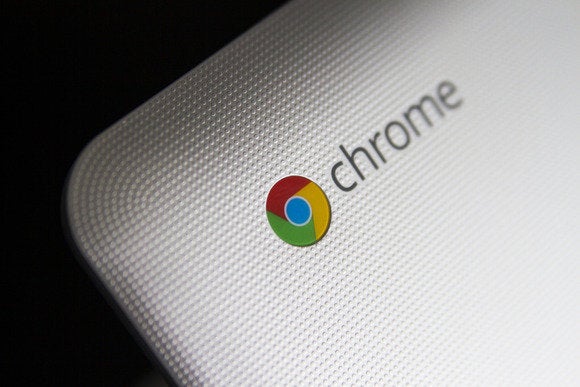One of the most popular stories I’ve written explained why I ditched my MacBook Pro for a Chromebook in 2012. Back then I didn’t know how long it would last, but it's become one of my more long-lived technology changes, sustained for two-plus years with few regrets.
Not only am I still using my Chromebook, now my business and family do too. Swapping out of Apple’s walled garden for Google’s fenced yard was the right move. I still long for a fully open source solution — an open field in the commons — but I don't want to make a full-time hobby of keeping my laptop working.
I bought a new Chromebook – a touchscreen Lenovo T20p, which was ridiculously cheap — but my original Samsung 550 is still running well (albeit with reduced battery life). I keep both around the house and use them interchangeably.
That’s not to say it’s been trouble-free with our various Chrome OS devices. To start with, the hardware has failed once or twice, though I’ve found the vendor support effective (in part as a result of buying through suppliers who mediate many problems. Much more important, I have multiple devices in the office and can switch seamlessly between different Chromebooks and Chromeboxes and be productive in mere moments on a new device.
Much more concerning was a recent issue where an update pushed out to Chromebook users caused a permanent failure mode that looked like a hardware problem. That had me using a backup device for several days before Google was able to release a new update to fix it. All the same, these experiences were quite different to my days on Macs — where a visit to an impossible-to-book Genius Bar would be needed — or on Windows, where I never found a way to get correct problems.
As for the MacBook Pro — yes, it’s still in use, but as a server for legacy apps and devices. The giant Cinema monitor is now connected to a Chromebox, where it provides a huge and perfect display at enormous resolution. The laptop itself spends most of its time as a print server, connecting a legacy laser printer for us all to use on Google Cloud Print. I sometimes use Chrome Remote Desktop to connect to it and run a configuration utility for the home network, but these days I can run LibreOffice on the Chromebook via RollApp.
The last routine use of the Macbook has been eliminated. Apple’s gradual abandonment of its legacy users — for example, eliminating support for older SMB-protocol file servers, which prevented me from accessing my NAS from the Mac when I foolishly “upgraded” to Mavericks — coupled with its selective approach to app screening makes me think I jumped at exactly the right time.

StackEdit provides a great Markdown editor
As for my workflow, I use the same applications mentioned originally. The most significant addition is that all my writing for InfoWorld now happens in a great Chrome markdown editor called StackEdit, which I've installed as an app for offline use. It offers a fully WYSIWYG preview, exports to HTML and PDF, and syncs with Google Drive, Dropbox, and CouchDB. It’s open source under the Apache license, and the app is offered free of charge, but I’ve subscribed to support the developer as I’m keen for it to keep evolving.
Printing remains a weakness, although our printing experience has improved overall. All the new printers bought by the office and family in the last year have included Google Cloud Print capability, which allows for simple printing once it’s set up. It’s possible to share printers with a Google Group, so we have a family and an office group that our various printers belong to. That means giving everyone access to every printer — including those at grandparents’ homes -- is as easy as subscribing them to a group. When it works, it’s great, but diagnosing printing problems remains a miserable experience. Google needs to focus attention on the usability and supportability of Cloud Print.
Security is gradually changing. All my devices support Google Security Key, so I now have a Yubikey as my default second factor in two-factor login. With the addition of Smart Unlock to Chrome OS and to Android Lollipop, signing in is becoming a rarity. Meanwhile, I have found the Mailvelope add-on from Chrome, which allows me to use both encryption and signing with browser-based email, so the need for a desktop system for crypto is decreasing.
Google’s Android runtime for Chrome OS is a clever idea that brings the large and lively Android developer ecosystem directly to the still-Chrome OS Chrome developer ecosystem. As a result of Android support, I use Evernote more often, now that its full-featured Android client runs on my Chromebooks. I think this gradual migration of full-strength apps over to the Chromebook will be one of the most significant improvements of 2015.
Overall I am still a happy Chromebook user. Chromebooks run on an open source foundation, which means Google invests in open communities in varying degrees. The apps I use leave me free to switch suppliers to varying degrees, and I’m trying hard to find open source alternatives among them. I've spent much less money to stand pat than I would have in either Apple or Microsoft’s ecosystem, while the functionality steadily expands. The biggest lock-in is Google’s login and identity management system, but an alternative seems beyond the reach of the noncorporate user.
Given how little it costs to buy a Chromebook at the moment — even enterprise-grade devices cost less than $300 -- now may be the time to give it a try.






